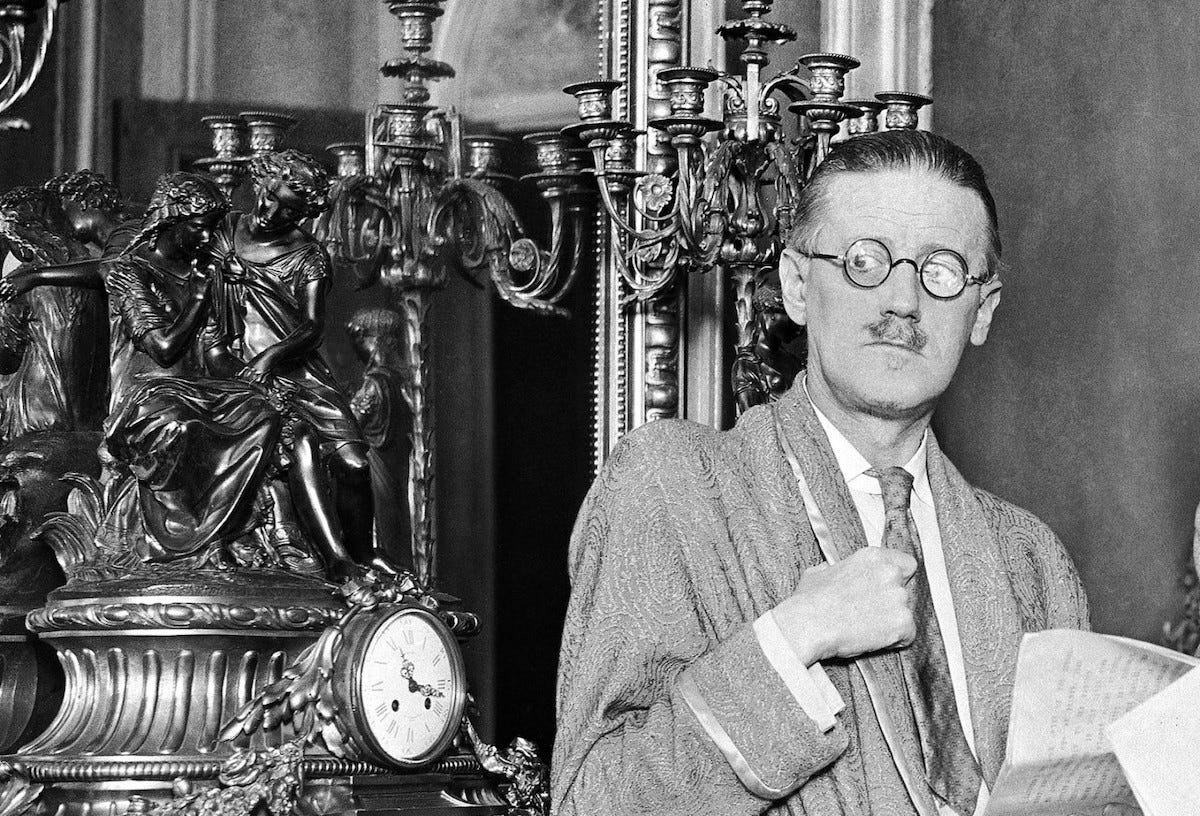
In my typical fashion, I jumped into James Joyce’s Ulysses a week or so ago, and it did my head in, as in that cliché phrase from the 1960s. My brain imploded, and I had to spit out the bits and pieces of that body part throughout the room where I do most of my reading. Undoubtedly, it is one of the most challenging books I have ever read. In other words, I loved it. Reading without pain is not a life worth living. I think I would need to read it five more times, including using the guidebook by Patrick Hastings, because without using The Guide to James Joyce’s Ulysses, I would have been lost in the sea, hitting the docks like a cork stranded in the water.
Ulysses feels like I read four or five books in one volume, that it is a dream-like presence if I even actually read the damn book. Sitting in a comfortable chair with a good light or lying in bed (with a good light) is not difficult. Although Joyce is a driver in a car, and you, the reader, are the passenger, I suggest securing a seat belt because it’s a wild ride into Joyce’s imagination and how he interpreted his city, Dublin, and its citizens. The plot is simple enough, with two characters who crawl through 18 hours at first apart, but they do join up in the latter part of the novel. But what happens, stylistically and in narrative experimentation, with strong page-turning urges, is that we come upon a new world.
We’re dealing with a middle-aged man (Mr. Bloom) and a younger man, Stephen, who are first apart but then become associates through the drinking world of Dublin. Both are dealing with the loss of a family member, and Bloom is coping with the idea of his wife being fucked by another man, and he seems to know precisely the time that this will happen. Bloom deals with that issue throughout the book as he walks through the city as Baudelaire haunts each street in Paris. Dublin is not Paris, but Joyce brings magic, and he is very much a prototype of a Situationist in how he approaches space and the city design as he goes from shop to shop and bar to bar within a tight time frame for the reader. Nineteen hours are the hours that he sets up, and as I mentioned in my previous post about this novel, I looked at the shape and thickness of my copy of the book and thought of it as a literal representation of those nineteen hours.
In the Hastings guide, he has maps of the routes that Bloom or Stephen take within the novel, so I have a picture or a structure in my head as I read on with the text. Ulysses is very much a piece of sculpture, but it is built up more by words than building material. It is a remarkable work, and I will return to it because it demands a second or third visit. The beauty of this type of literature is that the door is always open, and one doesn’t need a reservation to get in.















gotta upgrade to paid
S FOR Stephen, M for Molly, P for Penelope (?). Stephan haunted by his mother, on whose deathbed she asked for his prayers but he could not. Leopold sleeping with his head at Molly's feet, Leopold eyeing the lame girl at the same time Blazes and Molly were making love -- and g-d it, Ulysses is NOT hard to read.